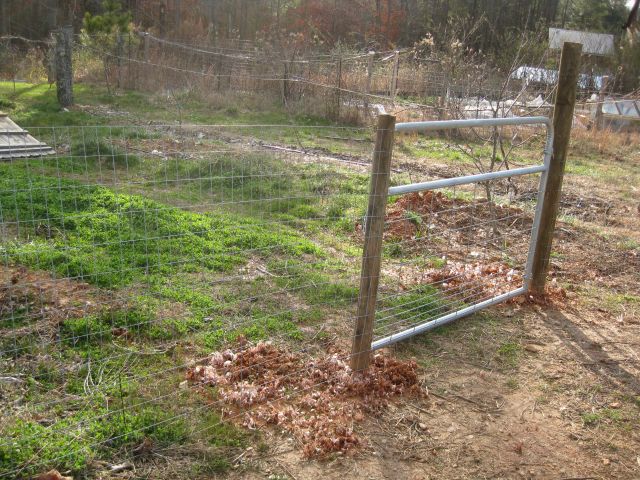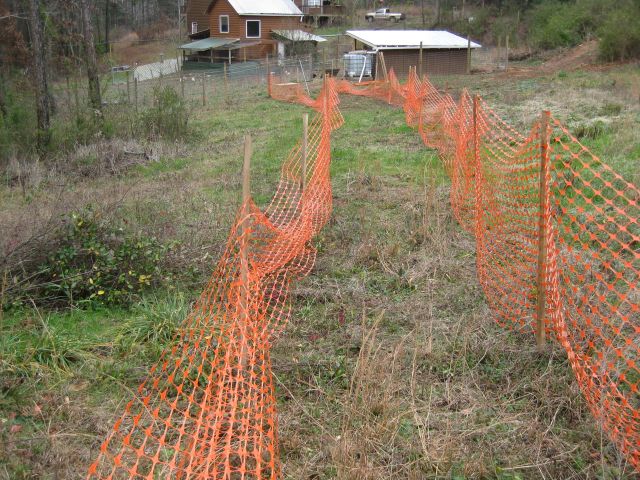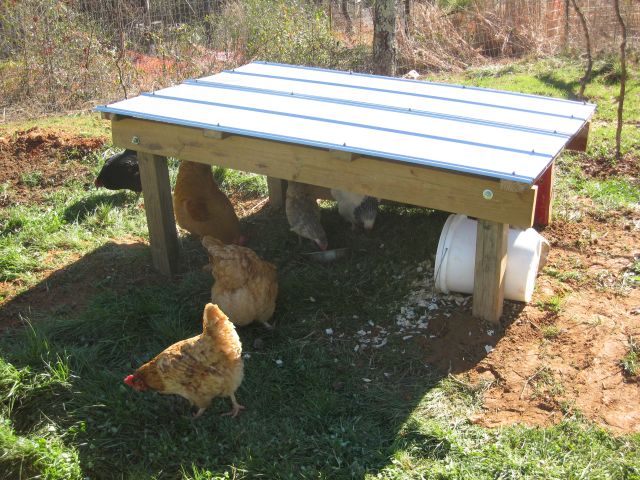The chicken are still doing well. Six hens from my former neighbor (4 hybrids, 1 Ameraucana, 1 ISA brown) and 8 youngsters ( 2 Buff Orpingtons (1 of which is a rooster called “Buffy”), 2 Golden Comets, 2 New Jersey Giants and 2 Speckled Sussex). No casualties, though one of the hybrids walks with a noticeable limp and is now called “Gimpy”. The two dominant hens are the Ameraucana and the ISA brown, which curiously are also among the smallest. The two largest hens, the New Jersey Giants, are the most timid and the 2 Speckled Sussex are the most antisocial. Whenever there is a commotion amongst the hens, Buffy rushes in to settle the dispute. He also charges out when there is a disturbance or security risk and crows throughout the day. Notwithstanding shortened daylight hours I am getting 5 to 6 eggs a day. I have decided against supplementing daylight with artificial lighting on a timer. The coop I constructed is working well for them – no moisture from outside and inside temperatures have not fallen below 30 F (when the outside has fallen to mid teens). They seem healthy enough though occasionally there is a soft shelled egg (to my dog’s delight) , so I supplement with yogurt and oyster shells.
I grow organically and my small orchard of 12 apple and assorted fruit trees began bearing fruit last year (actually I also have a 2nd orchard of first year fruit trees some years away from fruit bearing). With the appearance of fruit there also appeared a variety of bugs, especially on my apple trees. I know sanitation is important – removing the fallen fruit and wood cuttings because the pests overwinter in the fruit and cuttings. But how to remove the soil slumberers?
I installed a fence and 2 gates around the orchard and built a chicken day shelter and constructed a passage way to span the 120 ft from the main chicken enclosure to the orchard. And now my flock are hard at work in the orchard, removing debris and mulch with vigorous back swipes of their feet and voraciously eating the grubs and other soil dwellers.

Fencing is a fairly costly business. I used welded rather than the more expensive woven wire fences which are necessary for horses and goats, so there is a saving there. However, the gates cost from $65 to $100 and, if I had welding skills and access to surplus metal, I would make them myself – but I don’t, so I pay – and they should last indefinitely.
The passage way is temporary and I bought the red plastic material and stakes for about $9 per 100 ft from Lowes – marked down from $30.

I remedied the problem of the fence slipping down the posts by drilling a hole through each post near the top and tying string through the hole and the top of the fence.
Finally, the day shelter. I dug 2 ft holes for each of the 4 posts, bolted on 6″ wide planks to the 2 long sides and then 2′ by 4″ purlins and then screwed down galvanized roof sheeting. The roof sheeting was $20 for a 12ft long 2 ft wide sheet, which I cut in half to fit in my truck and to produce a 6ft by 4ft roof. I will board up the south and west sides to make them feel more secure and sheltered from the sun. In the shelter I have horizontally placed a 5 gal bucket with straw in the hope the hens will use it for egg laying, and a water container. To alert the flock to the advantages of the shelter I threw in a few handfuls of scratch corn, which immediately got their attention.

The roof slopes to the west to ensure the rain will run to the west and not over the east entrance. In addition to reducing orchard pests I expect the flock will enjoy a more varied diet, get more exercise, and consume less of the purchased food I provide.
